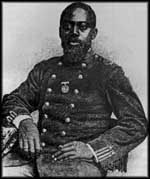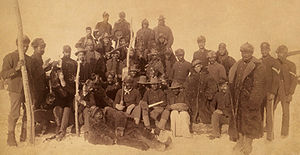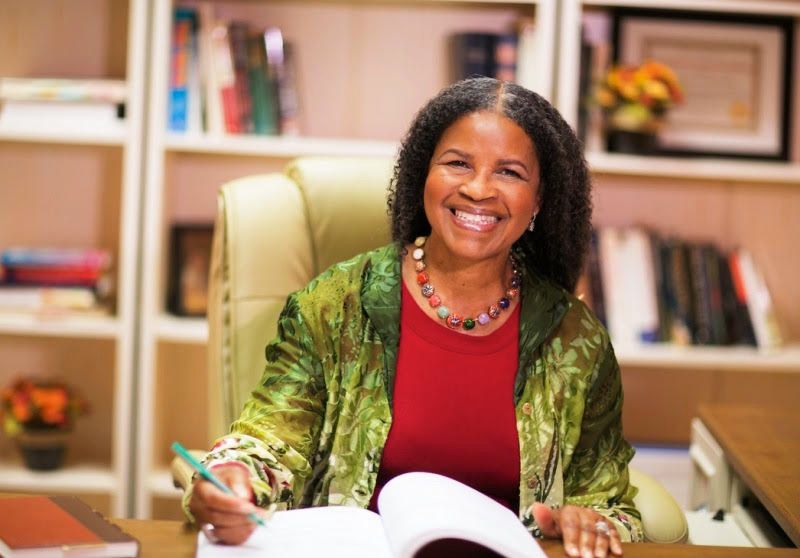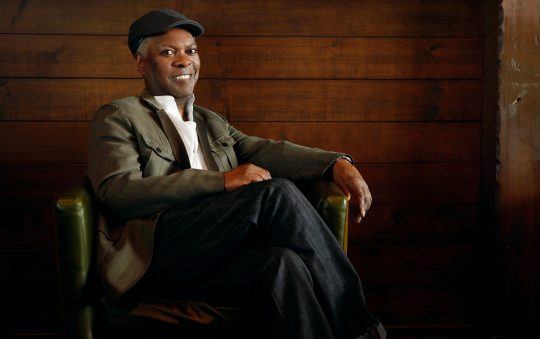



William Carney a Buffalo Soldier, Buffalo Soldiers, Buffalo Soldiers in Cuba, A Soldier of the 54th Massachusetts Infantry, A Fighting Unit
Â
“They were the criteria for Black soldiers in the U.S. Military.”
There are many historical versions about the origin of the Buffalo Soldiers but one thing is certain, they referred to Blacks soldiers in the United States Army. Also, it is also quite certain that the name originated with the American Indians–some sources say the Cheyenne in 1867. In the Indian culture and folklore, they would always describe things as literal as possible and the Indians’ close association to the buffalo (food, clothing, shelter and sport), and its literal comparison with the Black man–dark skin and curly hair–Buffalo soldier was a natural derivative of that comparison as seen by the Indian. Others claim that the Black soldiers’ fierce fighting spirit was akin to the buffalo. Thus, the term Buffalo soldier was seen a combination of those two descriptions and referred generically to the Black soldier.
The Buffalo Soldiers began as a part of the U.S. Cavalry’s 10th Regiment and later on evolved into six Cavalry Regiment units; the initial purpose for them being drafted–or (in)voluntary enlistment–was to enhance the fighting power of the Union Army, hoping to capitalize on their zeal as newly freed men. And though they were eager to display their thankfulness. Always with a White officer in charge, the Buffalo soldiers would fight alongside but never together with the Union White soldiers. They traveled parallel paths aimed at the same goal but were separate and unequal. They were used as fighting machines.
The most noted unit was the 54th Massachusetts Volunteer Infantry established via an act of Congress. (A movie was made of the 54th regiment starring Denzel Washington–for which he won an Academy Award–and Morgan Freeman).
Initially the Congress and the military were apprehensive about arming the newly freed slaves since those who set them free were their captors. The freedom of the slaves was based on military expediency and the convenience of the Union Army, not on a sense of morality. That those two abstracts resulted from the Emancipation was sheer coincidence. So at first, Congress saw Black soldiers ostensibly as occupants of peacetime units. President Abraham Lincoln used his political skill masterfully to transform the war. Instead of fighting to preserve the Union, the conflict was re-focused on abolishing slavery. Even prior to the Civil War, questions were raised about the feasibility–and the safety–of using Blacks (and Native Americans) in combat units–together of separately. Partly to assuage the obvious fears amongst the dominant population–North and South–Blacks were used, at first for menial support tasks.
By the end of 1862, the needs of the U.S. Army called for “armed” Black soldiers and volunteer units from several states were fighting alongside the Union against the Confederacy. The Black/Buffalo soldiers fought with distinction throughout the Civil War; they fought in over 300 battles earning 15 Congressional Medals of Honor for their conspicuous bravery above and beyond the call of duty. The Buffalo soldiers, in peace and war, demonstrated bravery and fought gallantly because they believed they were Americans not because of their skin color or ethnic origin. And ironically, the (mis)treatment they received was precisely because of the color of their skin.
The South noted the fighting spirit of the Buffalo soldiers of the North and began a massive drive to recruit some of them for the Confederacy. According to history, the South was too late, even their disingenuous offer of enlistment and freedom, in that order, to their slaves was unable to save the Confederacy.
As mentioned previously, the name Buffalo soldier became synonymous with the Black soldier, but it must also be noted that the activities of the Black soldiers during the second half of the 19th century are what gave meaning to the name the Buffalo soldiers including Sergeants Henry Parker and John Denny, William H. Carney, Christian A. Fleetwood (an 1865 Congressional Medal of Honor winner), Henry O. Flipper and Cathay Williams.
(Williams joined the army after dutifully serving in menial roles in order to provide a living for herself and not be dependent on others. She joined the 38th Infantry as William Cathay and got by since no medical examinations were required. She maintained her subterfuge for some time until she was taken ill. A medical examination became necessary and the rouse was exposed. Williams was one of the few women during that period to fight on the frontlines with the men. She was honorably discharged and became known as the first female Buffalo soldier. And Harriet Tubman, through her work with the Underground Railroad, came to be known as “General” Tubman though she was not formally enlisted as a Buffalo Soldier).
In addition to their abilities as fighting men, the Buffalo soldiers were also skilled in survival techniques having endured slavery for many years. Once during an expedition against the Indians between the Texas and New Mexico borders, the army was desperate to find water. The Buffalo soldiers were able to out-maneuver the Indians arriving at the water hole first, after 21 hours on horseback subsequently turning a near defeat into a total victory, and forcing the Indians to retreat into Mexico.
After the war, many of the Buffalo soldiers left the army while others remained. Those who remained carried on the tradition of the Buffalo soldiers as a fighting unit and it allowed Black soldiers to gradually blend into the military. The Reorganization Act established Black contingents and also greatly assisted the reorganization of the armed forces allowing Blacks to enlist in the regular army. From 1869 to the turn of the century, the army had established several all-Black units and as the country expanded west, Buffalo soldiers were an integral fighting force during the Indian Wars (1870-1891), the Spanish-American War (1898), the Philippines War (1899-1901) and General Pershing’s expedition into Mexico (1916). Black sailors were also referred to as Buffalo soldiers.
Though they displayed unquestioned loyalty and unbridled patriotism, coupled with a fierce fighting spirit, the Buffalo soldiers were treated as second-class citizens, in and out of the military. The indignities they suffered ran the gamut from housing conditions, un-equal pay, length of enlistment, quality of weapons to medical services, promotional opportunities and wearing apparel; and they endured these conditions continued throughout each military and non-military engagement of the Buffalo soldiers from the Civil War up to and including the Korean War 1952. The latter was shortly after President Harry Truman issued Executive Order 9981 outlawing racial discrimination in the Armed Forces.
As the society progressed industrially and technologically, racial conditions seem to lag behind. There were tepid instances of individual advancements but overall the Buffalo soldiers’ lot in the military appeared to be an immovable bastion of discrimination, segregation and racism. Notwithstanding, some of the worst treatment came from within the military community and as expressed by many Blacks, they were always fighting two wars: one for the military and one against the military.
During the Indian Wars, the Native Americans were often stunned because, to them, the Buffalo soldiers, like them, were mistreated by the White man; yet they were fighting on the White man’s side against them (the Indians). (It was briefly mentioned in the movie “Buck and the Preacher.” The Indians admonished the Blacks that they would not fight for them since they fought one the White man’s side against the Indians). It seemed tragedy to have one oppressed people killing another in the name and for the benefit of their mutual oppressor. Though the equation of a shared oppressor was never foremost in the minds of the Buffalo soldiers. As a result the relationship between Black and Native Americans had been mostly problematic and some of the Indians regarded the Buffalo soldiers as “black white men.”
As battle after battle came and went, and war after war was fought, the Black soldiers thought that change they expected would come later rather than sooner–very much later. When Blacks entered West Point Military Academy, they were ostracized by the White cadets throughout their entire duration at the academy; that they graduated and received their commissions did not make any difference. The adversity experienced by the Buffalo soldiers was part of their military experience and after the turn of the century, it grew worse. Racially spawned clashes in the military became prevalent as racial tensions throughout the rest of society reached critical levels. In spite of all those things, Blacks continued to join both the Army and the Navy in significant numbers. They were always ready to give their lives for “their” country and for the freedom of others–freedom that was usually denied to them at “home.”
Much has changed since the original days of the Buffalo Soldiers, including the integration of all military servicemen and women. There has been a slew of Black military officers at all levels of the military including General Colin Powell as the Chairman of the Joint Chiefs of Staff, the top position in the U.S. military. But the story of the Buffalo Soldiers remains one of unsurpassed courage and patriotism, and will be forever a significant part not only of the history of the American military but also the history of America.
Black men and women have fought with distinction in all of this country’s military engagements; some of their most notable contributions and sacrifices came during the Civil War where more than 180,000 Buffalo soldiers wore the Union Army blue. Another 30,000 served in the Navy, and 200,000 served as workers on labor, engineering, hospital and other military support projects. More than 33,000 of these gallant soldiers gave their lives for the sake of freedom and their country.
During Black history month in 2005, the Buffalo soldiers were heralded as heroes of American history who have contributed profoundly to the American way of life. They were made up of former slaves, freemen, freedmen and women.
On September 6, 2005, Officer Mark Matthews, the oldest living Buffalo Soldier, died at the age of 111. He was buried at Arlington National Cemetery.
The Indians believe that the name Buffalo soldiers is synonymous with respect, bravery and valor, and through the years Black soldiers have worn the name with pride.






